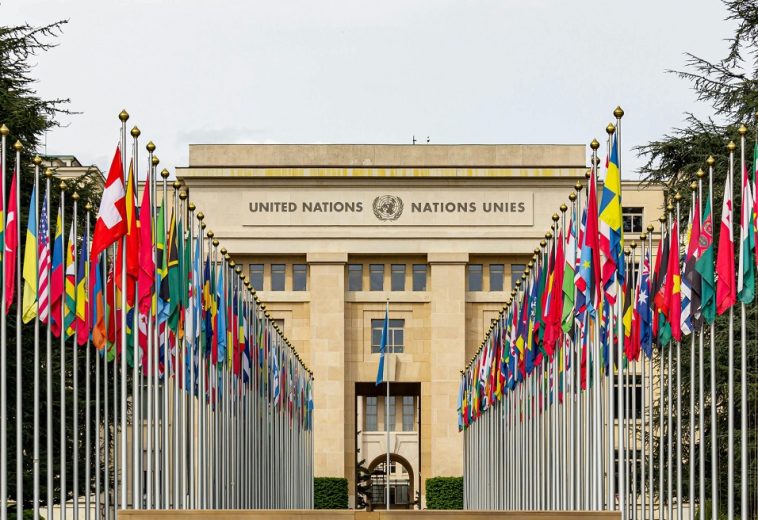High up in the lush hills of southern Ethiopia, at an altitude of around 2,500 meters (8,200 feet), lies Dorze Village, a hidden cultural treasure. Located near the famous town of Arba Minch, this village offers an authentic glimpse into Ethiopia’s rich traditions. The Dorze people are admired for their craftsmanship, architectural ingenuity, and sustainable way of life. For those seeking a deeper connection to Ethiopia’s heritage, a visit to Dorze is a transformative experience.
“From the moment I arrived in Dorze, it was clear that the village is much more than a destination—it’s a living symbol of tradition, resilience, and adaptability. As I wandered through the bamboo-framed alleyways, it wasn’t just the visually stunning textiles and homes that caught my attention, but the stories, laughter, and deep cultural pride of the people,” said Jessica Loans, a solo travel blogger.
A Cultural Legacy Rooted in Tradition
The Dorze, a small Omotic ethnic group, are renowned for their exceptional weaving skills. Historically known as the “weavers of Ethiopia,” they have built a reputation for producing some of the finest cotton garments in the country. This weaving tradition, which spans over 500 years, has earned Dorze national and international recognition. According to UNESCO, Ethiopian weaving traditions, heavily influenced by the Dorze, account for around 20% of the country’s textile exports.
Their fabrics are not only used locally but have also become popular exports, symbolising the cultural richness of the village.
What truly stands out in Dorze is their remarkable architecture. Their iconic elephant-shaped huts, constructed from bamboo and enset leaves, can last up to 80 years if properly maintained. Standing as tall as 12 metres (39 feet), these huts are designed to be portable. As termites eat away at the lower part of the structure, the huts are lifted and moved, becoming shorter but remaining fully functional. This eco-friendly design has attracted the attention of architects and sustainability advocates worldwide, positioning Dorze as a model for sustainable living.
According to a 2023 report by the Ethiopian Ministry of Housing, 68% of rural Ethiopian homes are still built from traditional materials such as mud, thatch, and bamboo. Dorze’s architecture exemplifies the adaptability and resilience of traditional building techniques in the modern era.
Agricultural Ingenuity and Culinary Traditions
The Dorze people are not only skilled artisans but also adept farmers. Their staple crop is enset, known as the false banana, which plays a crucial role in their diet and culture. The entire plant is utilised—its roots for food, its leaves for building huts, and its fibres for rope-making. A recent agricultural survey by the Ethiopian Institute of Agricultural Research reveals that nearly 20 million people in Ethiopia cultivate enset, contributing significantly to food security in drought-prone regions.
From enset, the Dorze prepare kocho, a traditional flatbread fermented over several weeks. As I shared a meal of kocho and wot (a traditional spicy stew) with a Dorze family, I learned that meal preparation is a communal activity, with methods passed down through generations. Dr Mesfin Wolde Mariam, a renowned Ethiopian anthropologist, has often remarked, “Enset is not only a staple food for the Dorze but a symbol of their resilience and sustainability.”
A Hub for Cultural Tourism
In recent years, Dorze Village has emerged as a hub for cultural tourism. According to the Ethiopian Ministry of Culture and Tourism, visitor numbers have increased by 40% between 2018 and 2023, making Dorze one of the most visited cultural sites in southern Ethiopia. Its proximity to Lake Chamo and Nechisar National Park further enhances its appeal. Eco-tourism initiatives, including homestays and cultural workshops, have provided the local community with economic benefits while helping to preserve their unique way of life.
Tourism has not only boosted the village’s economy but has also created a platform for cultural exchange. However, there is a collective understanding that the influx of visitors must be carefully managed to prevent cultural erosion. As of 2022, tourism to Dorze contributed an estimated $3 million to the local economy—a significant sum for a village with fewer than 10,000 residents.
Preserving Dorze Culture for Future Generations
Despite growing interest from tourists, the Dorze people remain deeply committed to safeguarding their cultural heritage. Elders play a vital role in passing down knowledge and skills, ensuring that younger generations understand and appreciate their ancestral customs. The resilience of the Dorze community is further supported by non-governmental organisations (NGOs) focused on preserving indigenous cultures and promoting sustainable tourism.
In a rapidly changing world, Dorze Village stands as a beacon of how a community can honour its past while embracing the future. As global interest in eco-tourism and cultural preservation grows, Dorze’s model of sustainable living, rich traditions, and strong sense of community offer valuable lessons to the world. For visitors, the village is more than just a destination—it’s a reminder that true wealth lies in preserving one’s roots.




